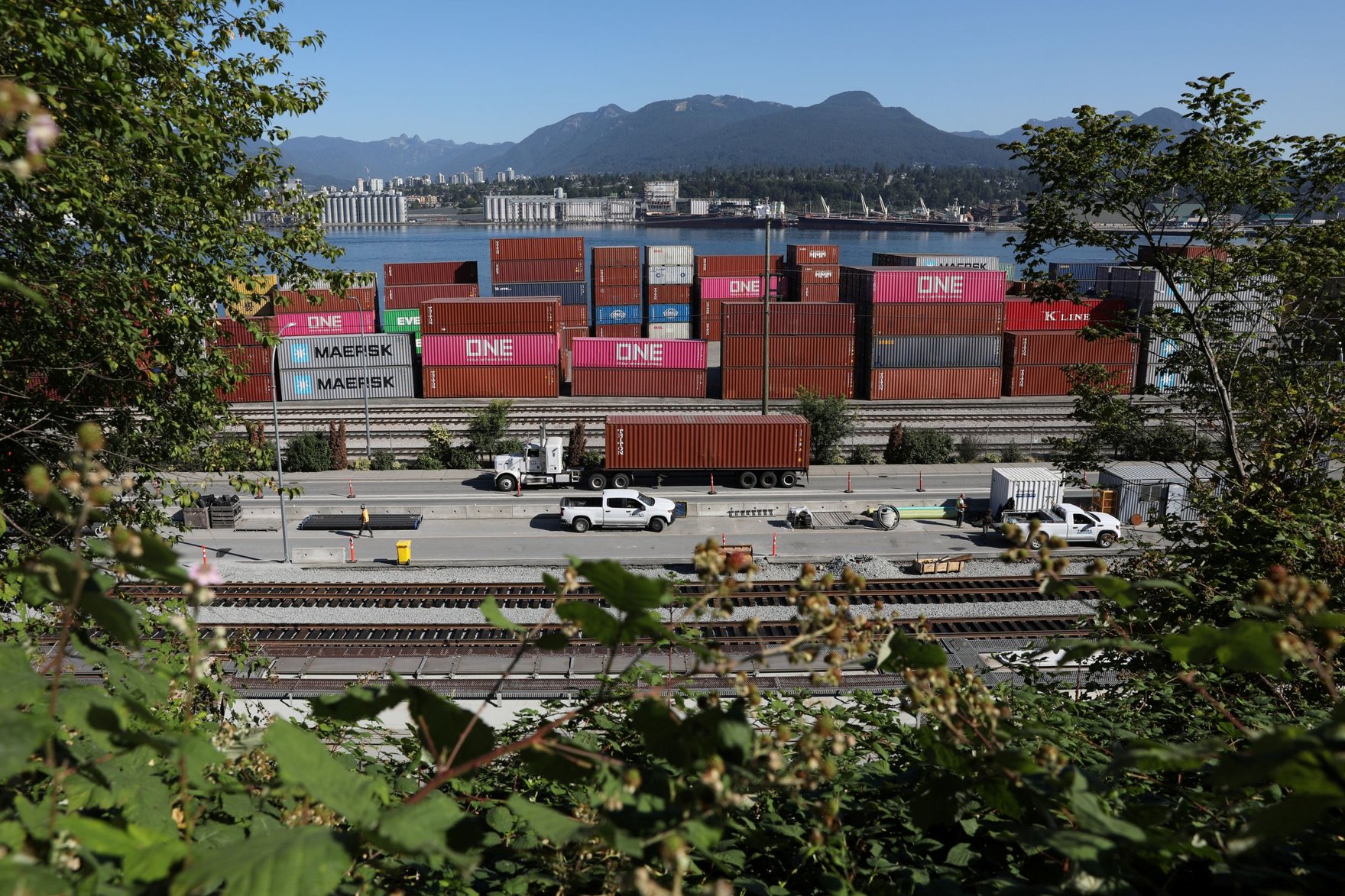This article was first published by the Financial Post.
To understand how Canadian firms are recalibrating in response to the Donald Trump-era tariff threats, policymakers might naturally turn to trade data to assess the impact.
Exports to the United States dropped almost 16 per cent in April from March, according to trade data released by Statistics Canada on Thursday, largely reflecting a surge in exports to front-run the tariffs followed by reduced auto production when tariffs on foreign cars came into play in April.
The problem is that these numbers tell us little about the impact today. These numbers are ancient history by now, especially given the many tariff-related developments since April.
As we learned during COVID-19, relying on backward-looking data during a crisis limits Canada’s ability to strategically and proactively respond. In today’s fast-moving trade crisis, a five-week lag is a long time.
Timing isn’t the only problem. The data we have no longer reflects how trade actually works. We are making policy decisions based on both a partial and lagged view of trade.
Half of Canada’s exports to the United States are intermediate goods, components that cross the border multiple times as part of integrated production. Yet we still measure trade, and often prioritize trade policies, as if trade occurs between final goods shipped from one country to another, ignoring the reality of globally distributed production. Trade today is also both digital and physical.
In a world of distributed production, where goods cross multiple borders before reaching consumers, a disruption anywhere matters.
The trade statistics miss all of this. They don’t account for digital inputs. They don’t show how supply chains adapt to shocks. They can’t distinguish between final goods and components.
Each cross-border shipment is counted at full value even if only a part has been added, inflating the trade numbers and overstating Canada’s relative exposure to the U.S.
Thanks in part to cloud computing and digital platforms, services that were not able to be traded globally in the past now account for one-fifth of Canada’s exports. Digital service exports in particular are the fastest-growing part of global and Canadian trade, though they are rarely mentioned in our trade discussions.
Canada has a deep stake in getting this right, especially now. We are a small, trade-reliant economy that can no longer count on reliable access to the world’s largest market next door and one that can expect a drastic and permanent increase in complexity and frictions at the border under Trump 2.0.
A “thicker” border means less incentive to invest on the Canadian side of the border, which is of major consequence for Canada’s economy.
In a world of distributed production, where goods cross multiple borders before reaching consumers, a disruption anywhere matters. Larger companies have global logistics teams and diversified suppliers. Smaller and mid-sized exporters often do not. To help them compete, policymakers need to invest in tools that provide real-time visibility into supply chain shocks, chokepoints and rerouting options.
Traditional trade statistics can’t do this. But modern digital data sources, combined with technological advances, can.
In a recent Centre for International Governance Innovation report, Digital Data and Advanced AI for Richer Global Intelligence, I outlined how digital data and advanced artificial intelligence (AI) can be used to build real-time intelligence, particularly in areas where traditional statistics fall short.
Much of the data for trade and supply chains already exists or could be gathered, and the latest AI advances allow us to scale and organize this information in near real time.
Logistics companies have up-to-the-minute data on where goods are and shipment delays. Large language models can classify goods in real time from unstructured, multilingual customs forms. Satellite imagery and Internet of Things sensors can track port congestion and chokepoints — for example, during the Red Sea attacks and 2021 Suez Canal blockage.
These tools can now help determine where to reroute in real time and what is a long-lasting disruption and what is temporary.
Other countries are starting to adopt these tools. For example, the United Kingdom’s Trade Data and Analytics Hub is piloting the use of satellite and commercial data to improve its trade statistics. Singapore is integrating logistics and customs data to reduce clearance times and track risks.
An additional factor is the emerging need to track labour practices and carbon emissions across supply chains. The European Union has new regulations requiring visibility into both of these across all parts of the production process.
This is another reason for Canada to upgrade its supply chain visibility, especially as the country seeks to deepen trade links with Europe and reduce its relative exposure to the U.S. market.
In short, if we don’t modernize how we measure trade, we will misread where the real risks and opportunities lie, dampen our trade competitiveness and make it less attractive to locate production in Canada.




